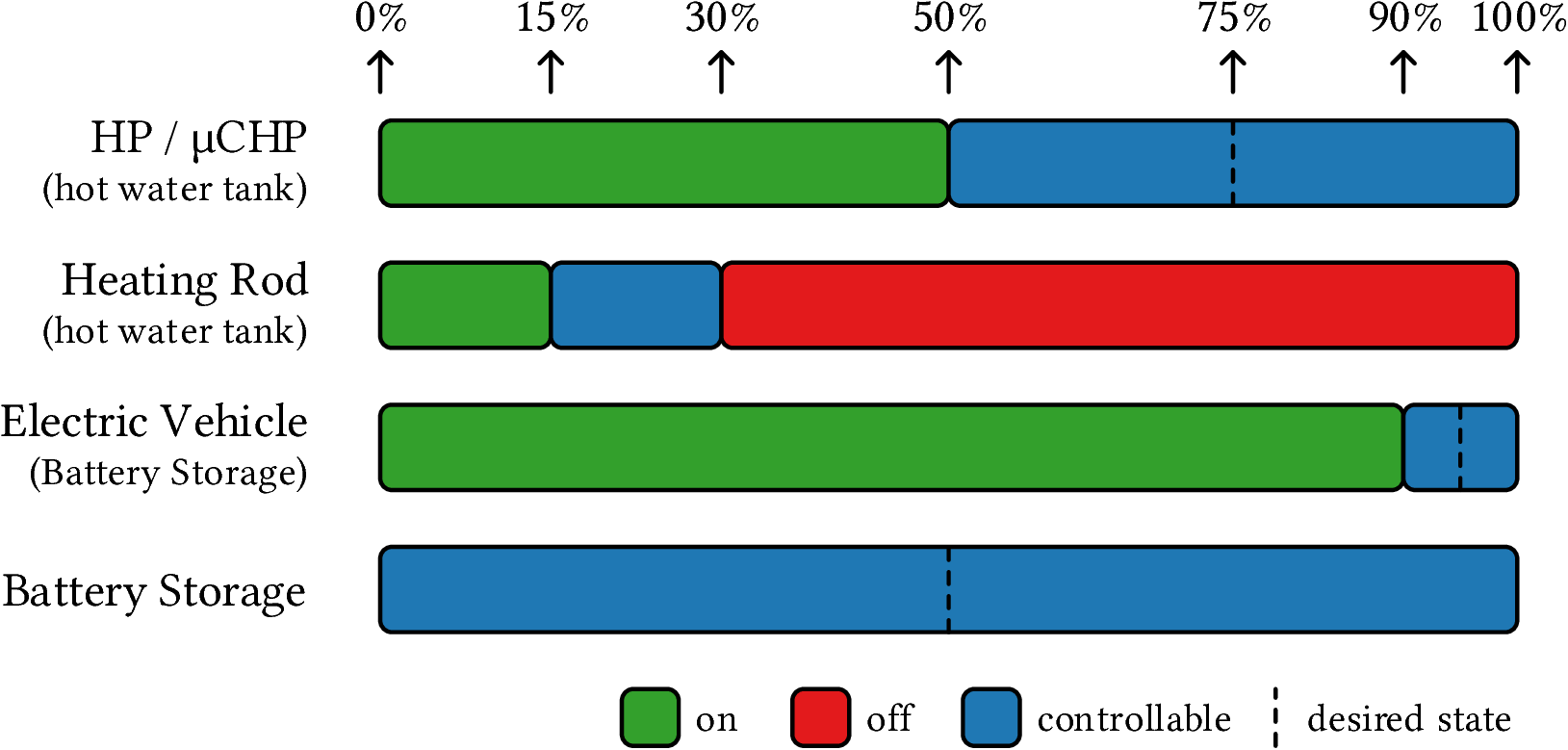Simulation Models
The following simulation models are included in SiENA and can be extended easily.
Households
Households are seperated into three different parts, representing different amount of smartness.
Conventional Household
- Basic behaviour without any optimisation
- Follows the behaviour of the device simulation models
Smart Home
- Household with smart devices
- Household optimises itself
Grid Home
- A smart home which can communicate with other smart homes via a communciation technology
- Performs distributed energy management using one of the algorithms
Devices
Common household devices are already integrated into the baseload of a household. The remaining devices, which offer additional flexibility, are divided into three types. A DEM algorithm has access to these devices.
All parameters can be adjusted freely in the configuration.
Shiftable Devices
- Activation time can be shifted to a later point in time
- Washing machine, tumble drier and dishwasher
- Parameters
- Activation time (by resident)
- Deadline (device must have finished its cycle until then)
Adaptable Devices
- The energy consumption and generation can be adapted freely
- Parameters
- Desired consumption
- Minimum consumption (might be negative)
- Maximum consumption (might be negative)
- The DEM algorithm can choose freely in between
- Battery Storage
- Charging power can be reduced freely or even reversed to feed into the power grid
- Desires to be charged to 50% to provide flexibility
- Parameters
- Capacity
- Efficiency
- Power
- Electric Vehicle
- Battery storage with occasional trips (charge is reduced after trip)
- Requires a minimum 90% charge level to guarantee user acceptance
- Minimum and maximum adaption depends on state
- Parameters
- Capacity
- Fuel economy
- Heating Rod
- Acts as a backup for heating devices below 15% charge level
- Can be activated to consume surplus power
- Parameters
- Power
Switchable Devices
- Can be switched on or off
- Heat pump
- Heats a water tank
- Desires a 50% to 75% charge
- Has to run for at least 2000 hours a year
- Has to run for at least 15 minutes before being switched off to reduce wear
- Parameters
- COP
- Power
- micro CHP
- Heats a water tank while generating power
- Desires a 50% to 75% charge
- Has to run for at least 5000 hours a year
- Has to run for at least 120 minutes before being switched off to reduce wear
- Parameters
- COP
- Electrical power
- Heating power
